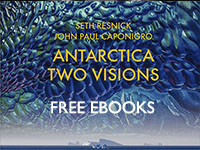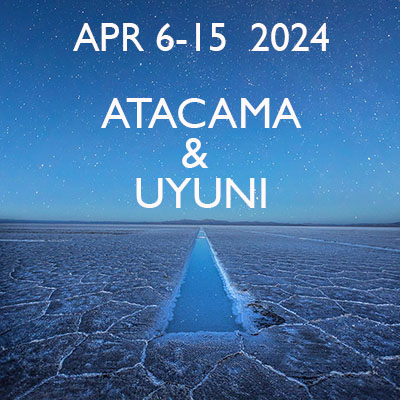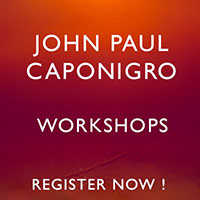The Differences Vision & Style
July 5, 2014 | Comments Off on The Differences Vision & Style
Many people think vision and style are the same. They’re not. What’s the difference? Vision is what you have to say; style is how you say it.
Confusing one for the other or focusing on one and not the other can be disastrous.
Just because your images look different doesn’t mean you’ve said anything or said it well. No matter how dazzling something may look, when style becomes a substitute for vision ultimately the viewer leaves unsatisfied – though they don’t always know why. If you confuse style for vision it confuses your viewers. And when you use a style that’s inappropriate for your vision it distorts the way your work is seen and it’s likely that you’ll be misunderstood.
You don’t have to make your images look different to say meaningful things and say them in your own authentic way. Sometimes less is more. Less style, more vision. Stronger styles make the viewer work harder to see past the surface of an image and find the deeper meaning within it. Strong styles work only if they complement a vision – then both become stronger.
Vision and style are related. Hopefully, vision drives style. Vision gives style meaning and purpose. When style reflects purpose it deepens the whole experience, making statements more deeply felt. Style can create meaningful connections between the subject and the way an image looks and even between multiple images. Subtle shifts in style throughout a body of work and even an artist’s lifetime have the potential to communicate even more meaning.
Seth Resnick’s Vision & Style Statements
July 4, 2014 | Comments Off on Seth Resnick’s Vision & Style Statements

Seth Resnick’s Vision Statement
My photographs are a journey into the personal energy of each subject. As a journalist, I started out photographing people and it was difficult for me to understand why landscape became so important in my work, especially when so many times there are indeed no people. Ironically my vision statement used to say that my photographs are about breaking personal space, but I learned it wasn’t so much about breaking personal space as it was capturing energy. When I was able to realize that, it was very easy for me to see a rock or a sand dune in the same way that I saw people and that journeying into that energy is really what I find so attractive.
The camera is a bridge to the energy I feel from the subject. I don’t want to displace that energy, but rather try to capture that very energy I feel in the moment. Hopefully, the photograph can elicit that same sensation in others. A camera freezes time, but I like to think that moment isn’t frozen at all but very much alive, almost akin to suspended animation.
I don’t select objects or themes. Rather, I let my subjects lead me. I love writing down parts of dreams or free-association thoughts in the night and then going out to try to capture those thoughts and feelings. One reoccurring theme that enters into my work time and time again is optical illusion. I was a big fan of M.C. Escher as a kid and continually find that influence in my work. I love when your mind can take something as concrete as a photograph and transform it so many ways. I am also very attracted to layers and compacted space that create a certain sensuality in nature. I realize I am exploring the fantasy of nature
Even in places that are less obviously beautiful, I try to find a deeper beauty that is filled with metaphor. In the Namibian desert, I found a simple salt deposit at the bottom of a sand dune. To me, though, it was much more than a sand dune. I call the photograph the Cerebral Desert because the patterns of the salt are a metaphor for a living brain. This is one of the driest and most hostile deserts on Earth, where daytime temperatures seemingly prohibit life, and yet one can envision a brain with a heart pumping blood through its very core.
I feel that my photographs become a metaphor for life. For example, I shot some old horseshoes on a windowsill in a small pueblo outside of Puerto Vallarta, Mexico. I’m sure folks walked by them every day and hardly noticed them. When I saw them, though, I felt a sense of energy that was representative of the vibrancy of the barrio. Here was a community that to the naked eye seems extremely poor and depressed, but there is a strong sense of community and family richness. The bright yellow wall contrasting the horseshoes helped to portray the vitality that I felt in this environment.
I hope that viewers can use my photographs to open up their own imaginations. People often ask me if my photographs are real. I love that the images seem to be from another world and thus can’t be believed. But I capture what is really there to be captured. I try to capture what my mind’s eye sees and feels.
Style Profile
Composition
I love bold graphic and complex relationships.
Space
I love layers of elements within a very packed frame. I get in tight and try to concentrate on the energy I feel from the subject.
Color
I love bold primary colors with intense saturation of the naturally occurring colors that we rarely see because we tend to focus on the overalls instead of the details.
Contrast
I love strong contrast and many times will crunch down my blacks.
Line
I dislike squiggly lines but love s curves especially ones that become sensual. I find it intriguing that all of my sports that I love, skiing, rock climbing, surfing, One wheeling are all based on s curves.
Texture
Texture is very important to me and helps complicate and define areas that are otherwise simplistic.
Light
Light is critical to me and I am always in search of dynamic light to accentuate the energy that I feel at the time of capture.
Gesture
Gesture and peak action are also very important elements to me. They help convey emotion and freeze time.
Seth Resnick’s Style Statement
My style typically incorporates graphic boundaries in a very compacted space filling the frame. I love to use layers and both straight and curved lines travel through that space deeply exploring the energy I feel from within that space and creating a sense of depth. I am interested in both the tension and solitude that exists within the frame. I use light, texture and bold primary colors to photograph the energy that I feel from the personal experience with my subject. I love to get in tight and enjoy both high telephoto and extreme wide angle to help create optical illusions which are important to me in the exploration of what I call the fantasy of nature.
I strive to allow my style to accentuate feelings of sensuality and create illusions but at the same time emphasize our fragile environment and instill a sense of responsibility to preserve it from further destruction.
People ask me all the time what kind of photographer are you? They would typically like me to say I am a landscape photographer. Being labeled as a landscape photographer sends a shiver down my spine. I am not a landscape photographer. I am not a wildlife photographer. I am not a people photographer. Yet all of these genre can fit into my repertoire of images. I photograph something that is invisible to many folks. I capture and render the energy that I feel between my self and my subject. My images are an exploration of conscious and subconscious energy.
View more of Seth Resnick’s photographs here.
John Paul Caponigro’s Vision & Style Statements
July 4, 2014 | Comments Off on John Paul Caponigro’s Vision & Style Statements
Vision Statement
Forms of environmental art rendered in virtual space, my work brings images conceived in the mind’s eye and held deep within the heart into clear focus.
These poetic journeys portray landscapes as sacred spaces, embedded within the larger web of life, sustaining and capable of generating more life, each with a unique character, spirit, and perhaps even different kinds of consciousness.
Exploring ways of walking through a beautiful world in a beautiful way, I invite others to celebrate with me the miracle that we are not apart from nature but a part of Nature.
These meditations in nature, illuminating the nature of perception and our perceptions of nature, offer inspiration for people to more fully experience and more creatively interact with our natural world.
When we speak of nature, if we replace “it” with “we”, a personal transformation occurs. Revitalize our relationships with nature and we revitalize ourselves.
Style Profile
Composition
I have a strong tendency towards simplicity and at times minimalism.
Space
I pay careful attention i to both the aspect ratio of the frame as well as the proportion of the objects and spaces within them.
I use negative space is used generously.
The negative spaces between and within things is even more strongly felt than the positive volume of objects.
Color
I strike a delicate balance between representing the subtle palette of nature and creating new color effects to promote stronger emotional responses.
I’m fascinated by atmospheric effects, so I favor full spectrum ambient color and light.
I moderate contrast with gradation.
Line
My use of line tends to be simple, smooth and continuous, highlighting contours.
Often, the most important line in and between individual images is the horizon line.
Texture
I use texture to define form and describe space but it’s not a primary concern.
There are a lot of smooth surfaces in my images.
Effects
I use special effects are as accents, rather than the primary subject, unless the subject/effect is light.
Continuity
In most cases, I combine two images into one.
I work in series.
The sequences I create between images often suggest gradual transformations.
Other Characteristics
Both my individual images and my series have musical qualities.
Their volume tends to be more quiet than loud.
Style Statement
When you look at my images you’ll see glowing sands, smoking waters, floating stones, impossible symmetries, enigmatic symbols, and many other mysterious events and states of being. Often, the heavens descend to the earth and the earth ascends to the heavens; always the two are seen in sublime relationships with one another.
Some would say my images are “surreal”, they are fascinated by dreams and imagination, but I use the term “visionary” to avoid limiting our understanding of this sensibility to one twentieth-century art movement, preferring to participate in an eternal universal human impulse that emerges in all cultures at all times whose primary motivation is spiritual.
Though representational my images are not only transcriptions of what I see with my naked eyes but are also explorations of what I see in my mind’s eye. My art explores the many points where the external and the internal inform each other. Specifically, my experiences are shaped by the land I live in and reshaped as I draw them inside me into memory and imagination. Ultimately, our identities are shaped by the views of the world we hold within ourselves; I practice art to expand mine; and I share them with others.
The light within my images is both captured and rendered, sometimes with software and sometimes by hand; it’s not just a quality, not just a property, but also an event; it’s not only a physical light from without but also a spiritual light from within.
Color, our response to light, a phenomenon that happens inside us in response to energies outside of us, serves several functions in my images: it celebrates the unexpected gifts found within the visible world; it supports a suspension of disbelief; it creates an atmosphere charged with emotion. My obsession with atmospheric ambient light and gradation highlights the ever-changing nature of our perception.
My images are less about the objects they contain than they are the spaces they frame. They explore the spaces between things, the spaces within things, and the distances between them. The negative space within my images is far from empty; it’s pregnant with possibilities.
More often than not two or more moments and/or views are presented together in a single image and in special circumstances in more than one image. The elastic time and space between images create a simultaneity that expresses a belief in and a desire for greater integration. The subject of each image can be seen as a fragment of a much larger whole. Each image exists not only in isolation, not only as a part of a series but also in the context of a growing body of images or life’s work.
First and foremost, my images present environments, sets of relationships that are dynamic and interactive. Exploring the spaces of the outside world and the inside world, they create a new space, a meeting place for both.
View more of John Paul Caponigro’s images here.








